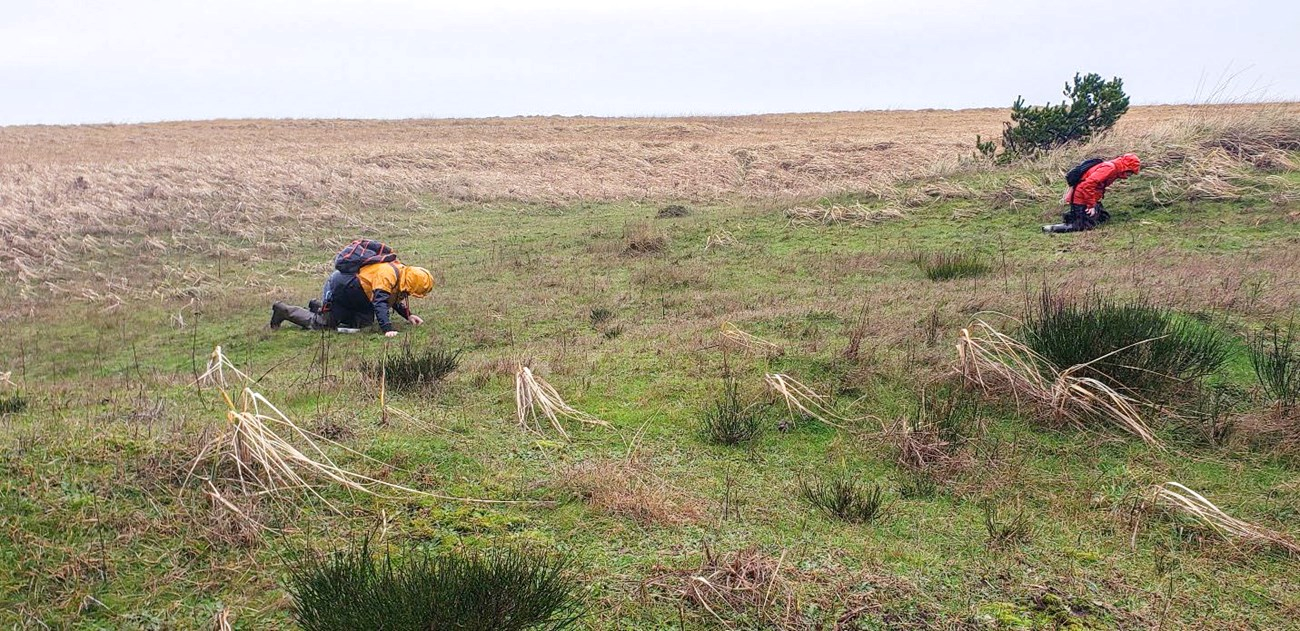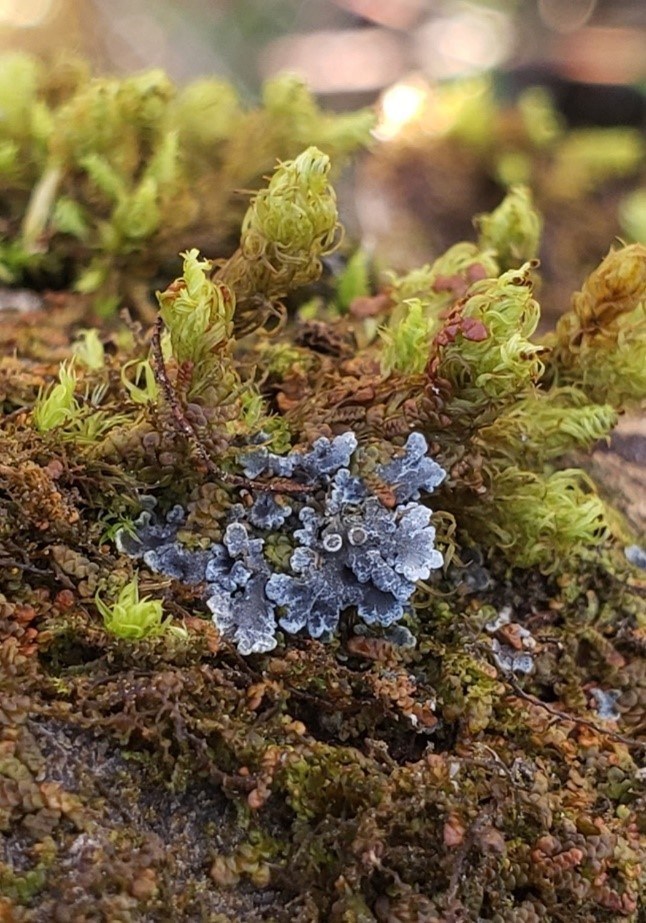Last updated: June 9, 2025
Article
Species Inventories Reveal the Lichens and Bryophytes of Lewis and Clark National Historical Park
By Christina Martin, I&M Research Scientist and Communication Specialist
July 2024
At Lewis and Clark National Historical Park, a species inventory has helped staff uncover the wide diversity of lichens and bryophytes in the park—information critical for future management decisions.
Since the winter of 1805–1806, when Lewis and Clark’s Corps of Discovery camped near the mouth of the Columbia River, the area has experienced significant ecological degradation. Today, park staff are developing a plan to restore its prairies, wetlands, dunes, and coastal forests. To better tailor these ongoing efforts, they needed to know more about the species that reside in the park, including bryophytes and lichens.

NPS
Big Diversity at a Small Scale
Lewis and Clark National Historical Park spans an array of habitats, including willow swamps, dune ridges, pine forests, and native prairies. Many native species of bryophytes and lichens are specialized to thrive in these diverse ecosystems. Bryophytes are a group of plants that include mosses, liverworts, and hornworts—all united by their lack of a vascular system, the circulatory tissues that trees and other vascular plants use to transport water internally. Lichens are complex life forms consisting of a partnership between a fungus and one or more species of algae, bacteria, and sometimes other organisms that work together to survive.
Despite their small size, these organisms play important ecological roles. They help regulate water flow, cycle nutrients, and create microhabitats. Yet they’re often overlooked, and scientific knowledge about them is limited.
Until recently, only a brief lichen inventory had been conducted in the park, and bryophytes had never been surveyed. So, scientists from the National Park Service Inventory and Monitoring Program arranged for an inventory of bryophytes and lichens in the Yeon property of the park. Their primary goal was to document the full diversity of species in this section of the park, with a secondary aim of detecting rare species—especially the elusive Pannaria rubiginosa, a rare lichen previously found in the area.

NPS
What did they find?
Surveyors recorded species presence and abundance across various surfaces within each habitat type. The resulting inventories, conducted in 2021 and 2022, documented 65 lichen species and 46 bryophyte species. Of the lichen species, 19 had never before been recorded in the Yeon property.
Notable finds included four lichen species considered rare or imperiled: Cetrelia cetrarioides, Peltigera hymenina, Usnea rubicunda, and the target species, Pannaria rubiginosa. Another, Sticta limbata, is classified as vulnerable. Surveyors also identified the invasive moss Campylopus introflexus throughout the property—an important data point for park staff working to manage invasive species.
With this comprehensive inventory, park managers possess a deeper understanding of the unique lichen and bryophyte communities in the Yeon property. This knowledge supports more informed and effective restoration strategies, and paves the way for future research on these often-overlooked yet ecologically vital organisms.
